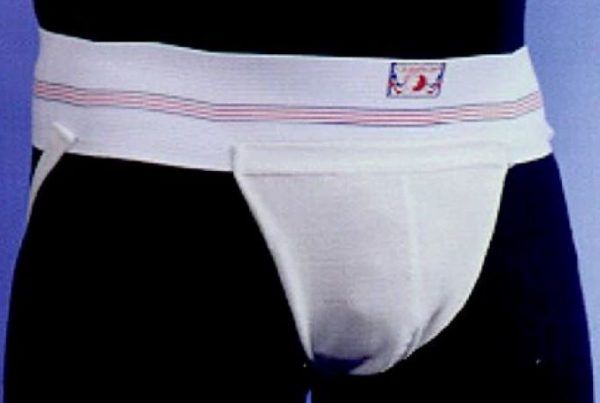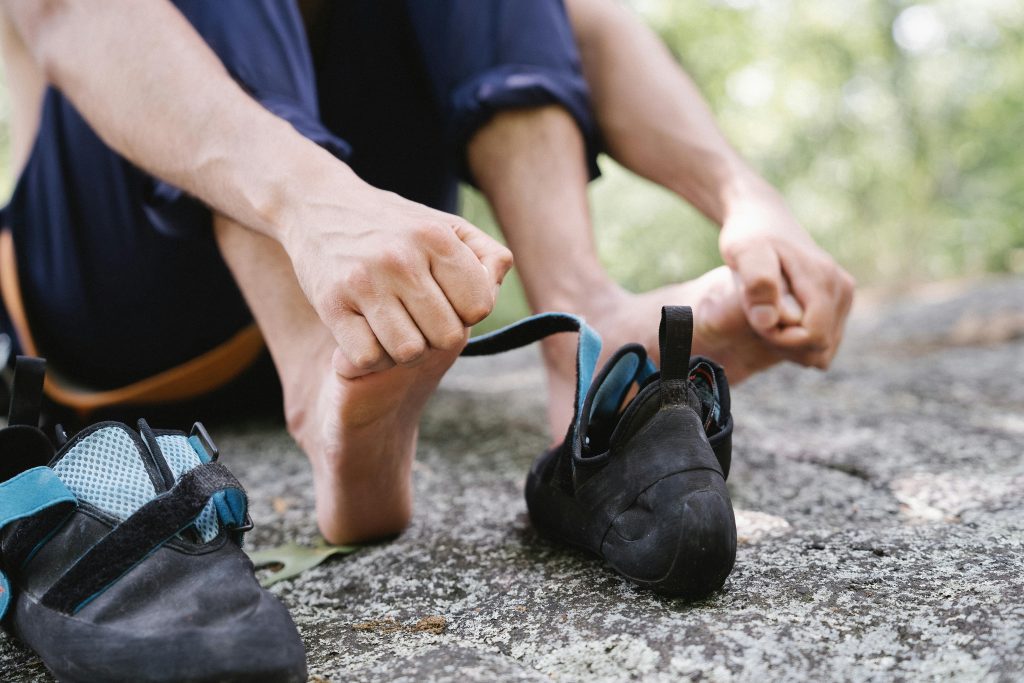
2024 is the year of better foot health. Halfway through the year, there’s already prominent research regarding what aches our feet. Below are the top 5 leading foot pain problems of 2024, their causes, symptoms, and possible treatment options. Let’s start at the very end of our list with Achilles tendonitis.
Achilles Tendonitis
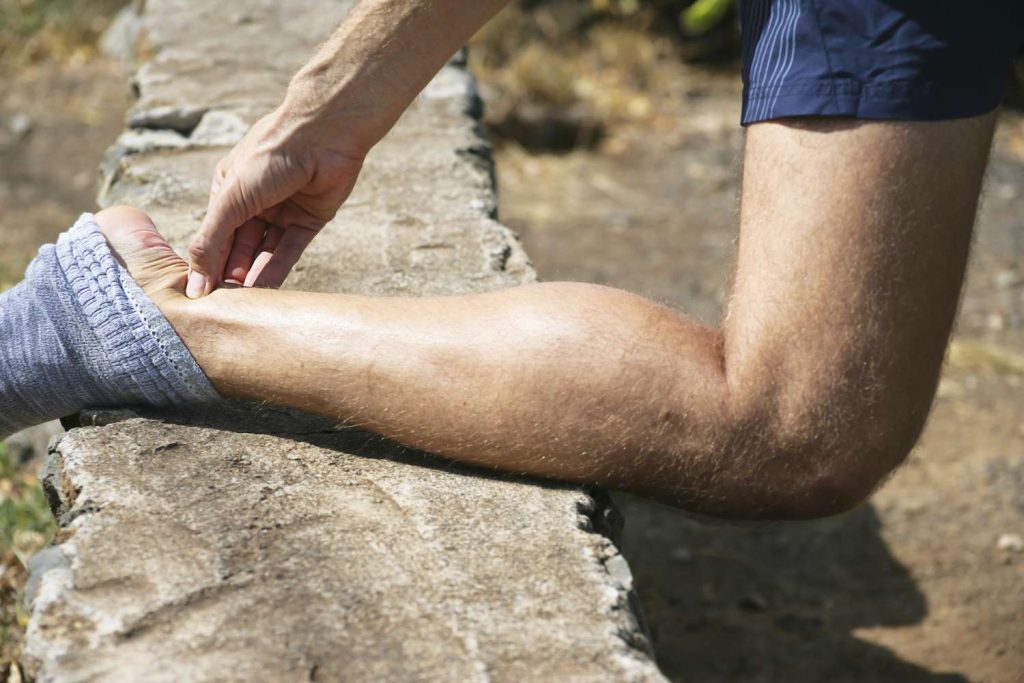
At the bottom of the list, we have Achilles tendonitis. According to a recent survey, around 6% of the respondents have reported experiencing this ailment in the past 5-6 months.
Achilles tendonitis is a chronic or overuse injury. This condition is the inflammation of the Achilles tendon, the tendon connecting the back of your leg to your heel. As the largest tendon in your body, swelling in that area can disrupt a number of your daily activities.
Causes of Achilles Tendonitis
One of the leading causes of Achilles tendonitis is an overly-stressed Achilles tendon. It’s a common sports injury. Being active on your feet won’t automatically give you Achilles tendonitis, but straining it might.
You really can’t do anything without that part of your body. Hence why it’s rather difficult to avoid letting it rest and heal on its own.
Symptoms of Achilles Tendonitis
Try to feel your heel and the back of your leg. Achilles tendonitis typically starts as a dull to mild ache. In the mornings, it can feel stiff, painful or even both. You can feel it whether you touch or move your leg.
There could also be any feeling of weakness, swelling, and warmth around that area. You may also feel some slight discomfort after active activities like going up the stairs or other exercises.
Treatment Options for Achilles Tendonitis
There are conservative (in-home) and surgical options available for treating Achilles tendonitis. These include the RICE method. This method involves resting, icing, compressing, and elevating the affected area. You can also get OTC NSAIDs for the swelling. Some doctors recommend physiotherapy to strengthen your calf muscles.
If the pain doesn’t improve within six (6) months, healthcare professionals can then suggest surgery. It’s best seen as a last resort since severe cases can lead to an Achilles tendon tear.
One procedure called debridement is for the removal of bone spurs and damaged tendon tissue. Another procedure is gastrocnemius recession. It’s when your calf muscles are lengthened to compensate for the stress in the tendon.
Bunions & Bunionettes
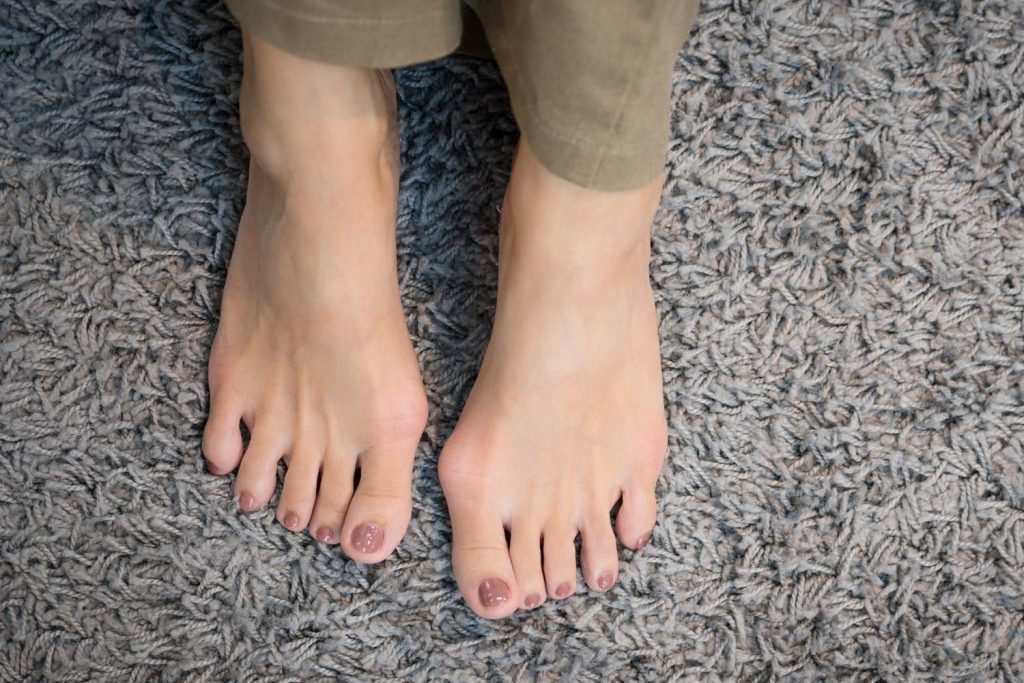
Next would be bunions and bunionettes. Around 11% of the current respondents this year have reported experiencing pain from either the presence of bunions or bunionettes. Bunions are so common that an estimated one-third of the population over the age of 65 currently have them.
A bunion is a small bony protrusion that develops on the side of your big toe. It ends up crowing the rest of your toes. On the other hand, a bunionette is a smaller bunion on the other side of the foot. Instead of the big toe, it grows on the base of your littlest toe.
Causes of Bunions & Bunionettes
Some people inherit a genetic risk factor for bunions and bunionettes. If flat feet and low arches run in your family, there’s a higher chance that you’ll end up getting them. Loose tendons and joints also increase the risk of both bunions and bunionettes.
Symptoms of Bunions & Bunionettes
The sign of a bunion or bunionette is pretty straightforward. It’s the presence of a hard but tender bump on the side of your foot. A bunion would appear on the side of the big toe while the bunionette is on the little toe.
These little bony protrusions start harmless enough. But they will eventually swell up and cause more pain in the long run when they are left alone.
Treatment Options for Bunions & Bunionettes
Even though surgery is the only effective remedy for bunions and bunionettes, it should be the last resort. There are nonsurgical options as well. Specifically, there are home remedies, medications, and orthotics for you to try first for better pain management. Like NSAIDS, which are fast and effective for keeping down discomfort as well as swelling.
Speaking of swelling, cold therapy or using ice gels can significantly bring that down by shrinking the blood vessels. For cramping and soreness, heat therapy can relieve those symptoms. Patients make use of a combination of both for the best results. Apart from hot and cold packs, other over-the-counter treatments you can try are as follows:
- Comfortable shoes
- Toe separators or spacers
- Shoe inserts
- Bunion splints
- Extra padding
- Bunion sleeves
Plantar Fasciitis
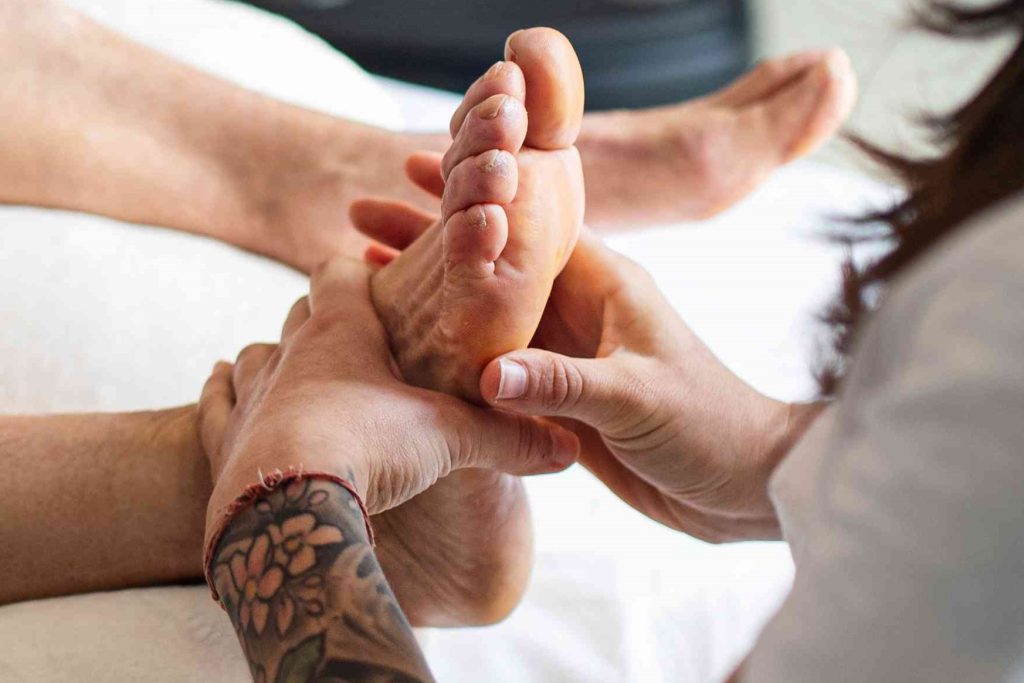
Coming up third on our list is plantar fasciitis. Based on the survey, 12% of the respondents have experienced pain due to this affliction. Moreover, even healthcare professionals recognise plantar fasciitis as the top three sources of foot pain among their clients.
Runner’s knee, or plantar fasciitis, is another overuse injury. Only this time, it affects the plantar fascia, the ligament at the bottom of your feet.
Causes of Plantar Fasciitis
There could be multiple reasons why your feet are more susceptible to plantar fasciitis. It could be because of the mechanics of your feet or your use of improper footwear. Occupation, age, and weight also play a role. For more details about the causes of plantar fasciitis, we have already summarized them in our article.
Symptoms of Plantar Fasciitis
The pain from plantar fasciitis usually occurs around the heel and arch of your foot. A slight tenderness can commonly appear at the bottom of your foot under your heel bone. Some swelling in that area can take place as well.
The first steps you take early in the morning might feel sore. Try bending your foot upward or standing on tiptoe. If your feet cramp up, then you might have plantar fasciitis.
Treatment Options for Plantar Fasciitis
A foot pain problem like plantar fasciitis can have several treatment options. These treatment options are classified into five (5) main categories:
- Conservative Treatment,
- Manual therapy,
- Medications,
- Non-surgical Approaches, and
- Surgery and Others
Going on the conservative treatment involves the RICE method. On the other hand, manual therapy covers basics like stretches and strengthening exercises. You can use OTC medication like ibuprofen to help with the pain.
Physiotherapy is a popular non-surgical approach, including orthotics and night splints. Steroidal injections, ultrasonic tissue repair, and extracorporeal shock wave therapy are your options if the previous alternatives don’t work. Healthcare professionals would recommend a surgical procedure to separate the plantar fascia from the heel bone as a last resort.
Foot & Ankle Arthritis
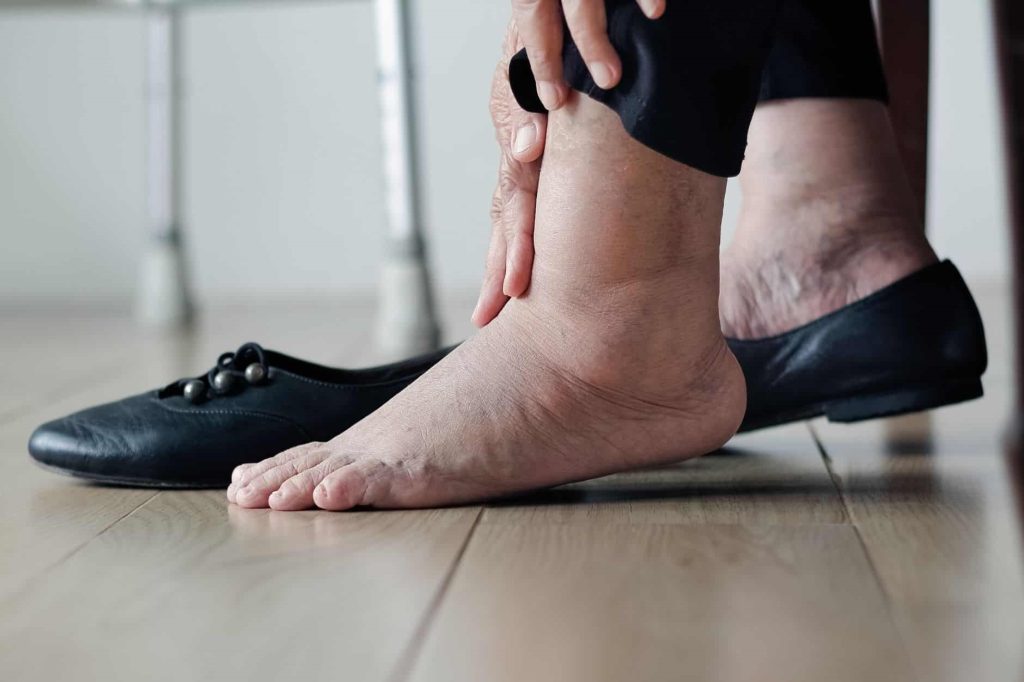
We’re almost at the end. Foot and ankle arthritis comes in second, with 23% of respondents enduring foot pain from some kind of arthritis. There are three main types of foot and ankle arthritis. These are posttraumatic arthritis, rheumatoid arthritis, and osteoarthritis.
Causes of Foot & Ankle Arthritis
There is no singular cause of foot and ankle arthritis. It varies greatly on the type of arthritis a person has. For example, posttraumatic arthritis is a result of an injured joint like a fracture or a sprain, particularly the cartilage. When damaged, the cartilage protecting the joint deteriorates faster or earlier than usual.
Some people also are more genetically inclined to acquire chronic or autoimmune diseases like rheumatoid arthritis. A person’s immune system attacks the synovium of the affected joint, targeting the surrounding cartilage and bone.
Another probable cause is age. Osteoarthritis, for instance, can also affect younger people, but it primarily occurs in middle-aged individuals. As opposed to rheumatoid arthritis, this degenerative condition wears down the cartilage. In time, you’ll be left with no protection around the joint. The bones rub on each other, giving rise to bone spurs or osteophytes.
Symptoms of Foot & Ankle Arthritis
Typically, the pain starts gradually. Depending on the cause, foot and ankle arthritis can also feel painful from the get-go. Any intense exercise or even regular movement can spark a flare-up. It could appear more once you take a break or in the morning. The affected joint may appear swollen, warm, tender, and red. By extension, you’ll end up having a hard time walking.
Treatment Options for Foot & Ankle Arthritis
The regimens for different foot and ankle arthritis conditions vary between the causes and types. Generally speaking, here’s a blanket list of treatment options for almost any kind of foot and ankle arthritis:
- Replacing your shoes with better-fitting comfortable pars that have:
- better support,
- flexibility,
- shape, and
- preferably rubber soles
- Placing shoe inserts or arch supports in your shoes
- Adding stretches and exercises to your daily routine
- Utilising physical therapy to your advantage
- Using supports like a brace, cane, or walker
- Taking aint-inflammatory drugs for the swelling and pain relievers for the pain
- Injecting steroid medication
Medical professionals can only endorse surgery when the arthritis hinders the patient’s everyday life. Some surgeons even suggest two surgeries, depending on the severity of the case. The surgeries in question are as follows: Arthroscopic debridement, arthrodesis (fusion surgery), and arthroplasty (joint replacement surgery).
Metatarsalgia
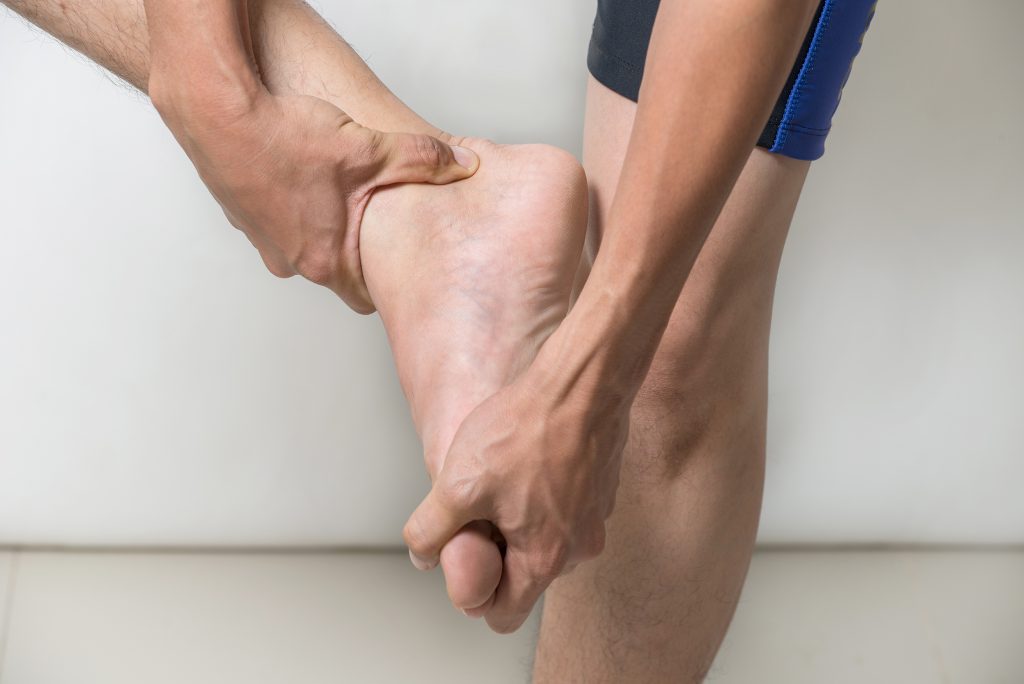
Lastly, with 33% of respondents being afflicted with it, Metatarsalgia is the number 1 foot pain problem in 2024.
Metatarsalgia is an inflammatory condition involving the forefoot bones, with the pain originating at the bottom of the foot. It got its name from the affected bones called the metatarsals.
Causes of Metatarsalgia
Other foot disorders like stress fractures, gout, arthritis, and bursitis can cause metatarsalgia. Morton’s neuroma, in particular, is almost synonymous with this condition. The pain also centres on the ball of your feet, but it’s because of the compression of nerves. It can lead to the inflammation of the metatarsals if not treated early.
Other causes of metatarsalgia are as follows:
- Ill-fitting shoes
- Foot deformities
- Being overweight
- Previous inflammatory issues
- Hypermobile bones
- Weak or tight toe muscles
- Stiff Achilles tendon
- Improper way of walking or running
- Too much vigorous (rigorous) exercise
- Participation in high-impact sports
- Presence of overuse injuries
Symptoms of Metatarsalgia
One of the main symptoms of metatarsalgia is the distinct burning pain at the ball of your foot. It’s the section of your sole right behind your toes. The shooting or sharp pain can also manifest as a tingling or numbness in the toes.
The burning sensation may worsen when you stand, walk, or run. It’s likened to having a pebble in your shoe at times.
Treatment Options for Metatarsalgia
The easiest quick fix you can try to manage metatarsalgia is the RICE method, followed by switching your footwear. Find the right size for you since ill-fitting shoes may lead to further damage in the long run. Possibly invest in proper shoe inserts and orthotics like metatarsal pads for maximum comfort and healing.
Strengthening stretches and exercises like calf stretches can make your feet more flexible. In doing so, the pain won’t be too bad. They can also help you manage your weight.
You can also use pain medications like ibuprofen, aspirin, and steroid injections to lessen discomfort and swelling.



